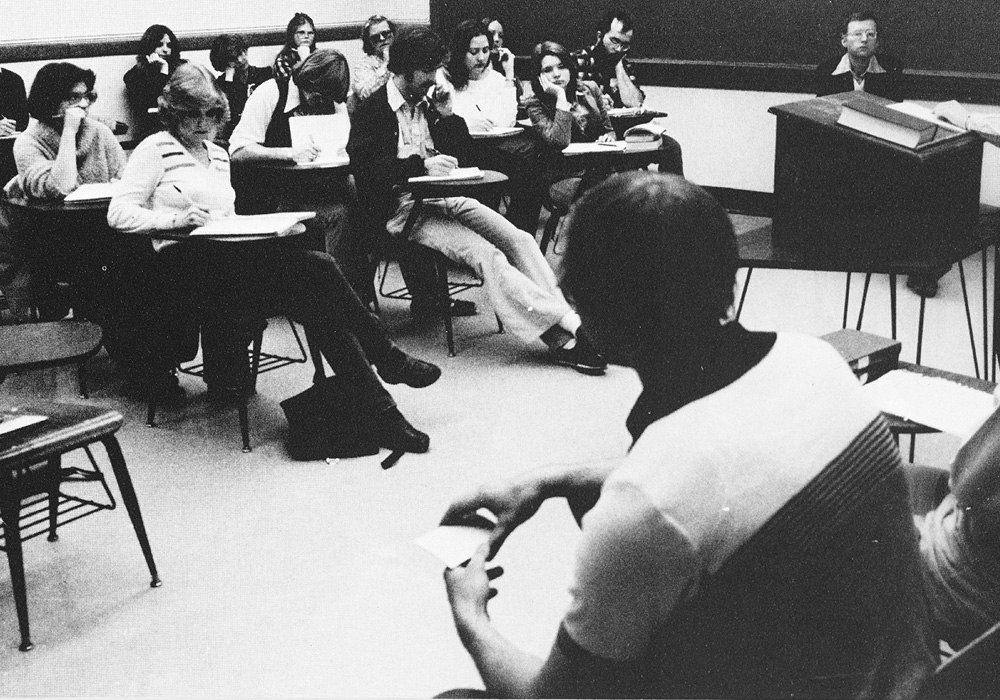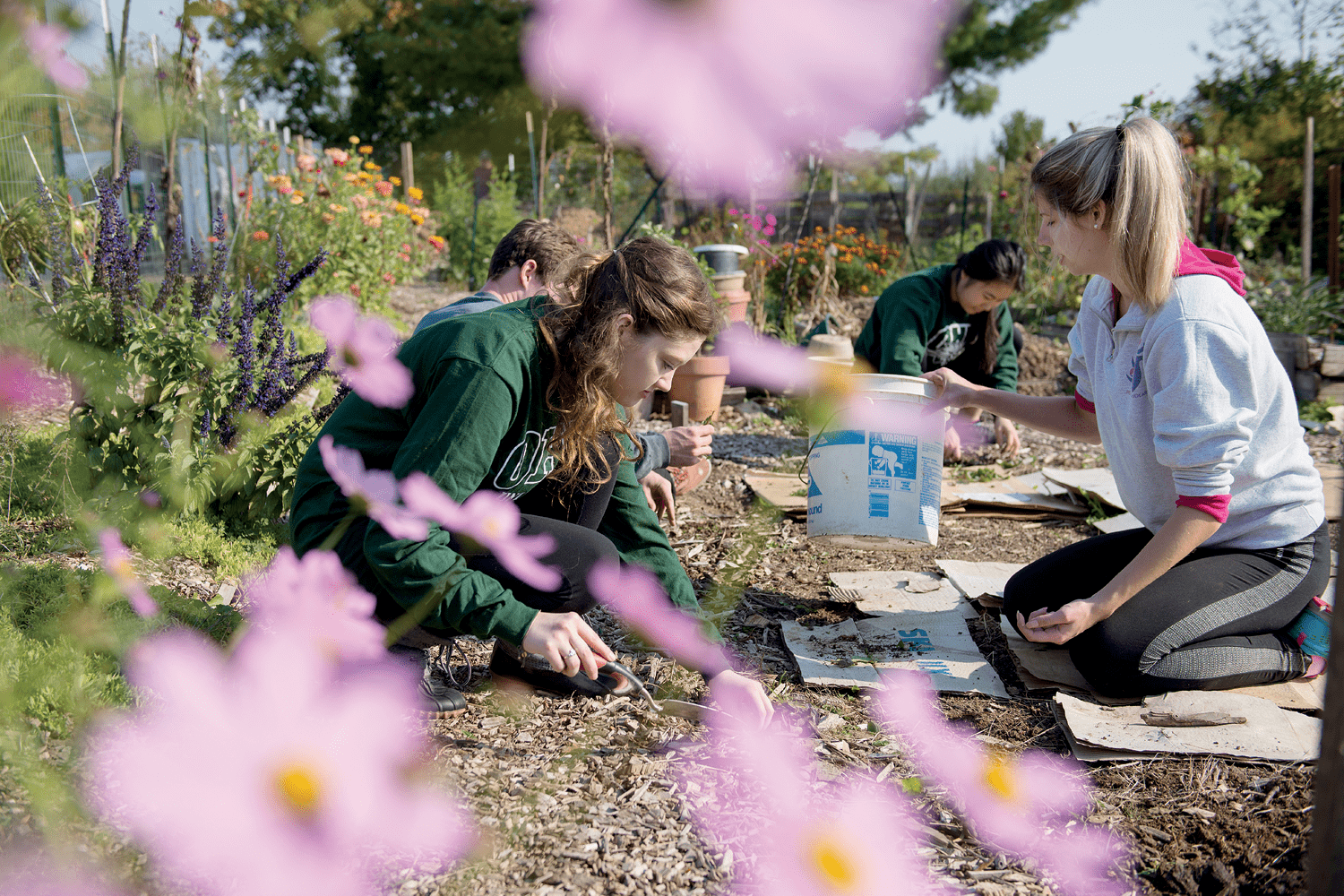What was your Tier III class? Perhaps you took Gandhi and King, Sustainable Agriculture, or Stories and the Pursuit of Meaning.
Tier III, the culmination of Ohio University’s three-tiered general education system, was also known as “synthesis.” The fun, interesting and creative nature of the courses was something of an intellectual reward for all of your hard work leading up to it.
Today, the tier courses that nearly all OHIO undergraduates have experienced for the past forty years have been reshaped into BRICKS—an acronym defining the learning outcomes of a reimagined general education program and, by no coincidence, a word that speaks to Ohio University’s visual identity.
The first major change to general education curriculum since 1979, OHIO BRICKS debuted this fall, updating the University’s liberal arts education to meet the demands of the 21st-century world. In an era when content knowledge and technological developments advance so quickly,

Students are seen in a History of Medieval People class in this photo from a 1981 Spectrum Green yearbook article about OHIO’s new general education requirements. Photo courtesy of Mahn Center for Archives & Special Collections
“[The National Association of Colleges and Employers] publishes the Job Outlook survey each year, which surveys employers. Consistently, problem-solving/critical thinking skills are the number one attribute employers seek on a candidate’s resume regardless of major. Broad attributes like problem-solving, teamwork, analytical/quantitative, and communication skills always rank higher than discipline knowledge,” says Dr. Katie Hartman, BBA ’97, MBA ’98, associate provost for faculty development, professor of marketing and former chair of the University Curriculum Council’s General Education Committee, which oversaw the gen ed overhaul.
To that end, OHIO BRICKS builds on the tier curriculum—breadth of knowledge, written communication, quantitative skills and synthesis—by adding other explicit learning outcomes. These include critical thinking, intercultural knowledge and competence, teamwork, ethical reasoning, oral communication and integrative learning.
Students may achieve learning outcomes in the form of an entire course on one of these competencies – say, oral communication by way of a public speaking course. Or it might come through infusion into the current curriculum, such as a business course with presentations.
With the new focus on learning outcomes in addition to discipline knowledge, OHIO faculty have been implementing “backward design,” using the educational goals spelled out in BRICKS to develop their courses and instructional techniques. Through faculty learning communities, workshops and grants, faculty have been preparing for the gen ed shift for nearly two years, mapping plans not only to teach to learning outcomes, but also to evaluate their effectiveness.
And what about those memorable Tier III courses? They’re not going away. What was Tier III has been transformed into Capstones, so students can still take Brewing Science or War and Peace Studies.
“The new capstones include critical thinking and integrative learning, which involves connections between disciplines and experience, reflection and self-assessment … which provides deeper learning opportunities for all OHIO students,” says Hartman.
Under the new general education requirements, Ohio University students will learn to:
- Build connections between themselves and others through teamwork and intercultural knowledge
- Reason quantitatively, critically and ethically
- Integrate learning between knowledge and experience
- Communicate effectively in writing and speech
- Know the materials and methods of inquiry in arts, humanities, social sciences and natural sciences
- Synthesize skills and knowledge across the curriculum
Featured image: Students enrolled in the Sustainable Agriculture course, which helped meet general education requirements under the tier system, gain experience in growing an organic garden. Photo by Ben Wirtz Siegel, BSVC ’02



